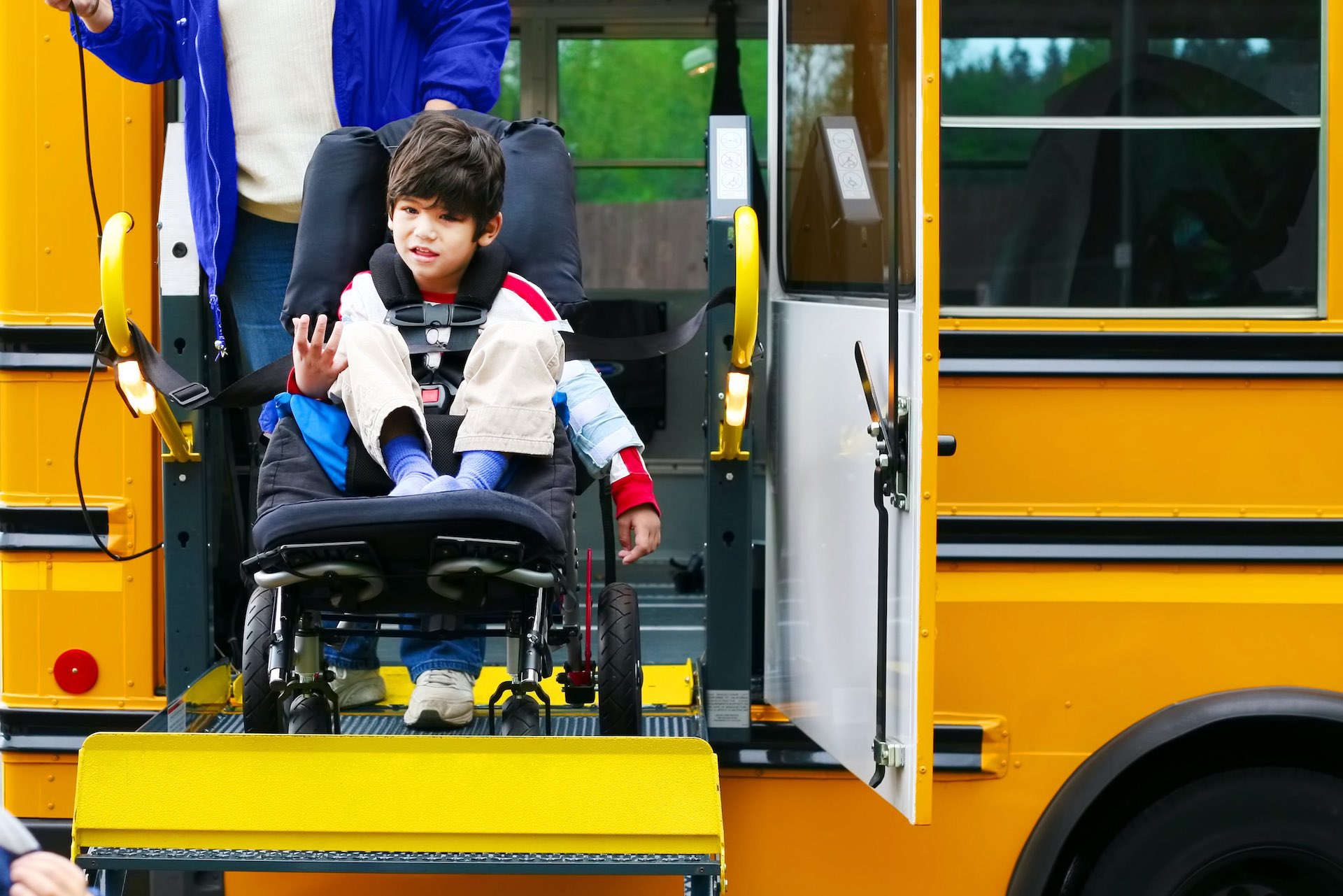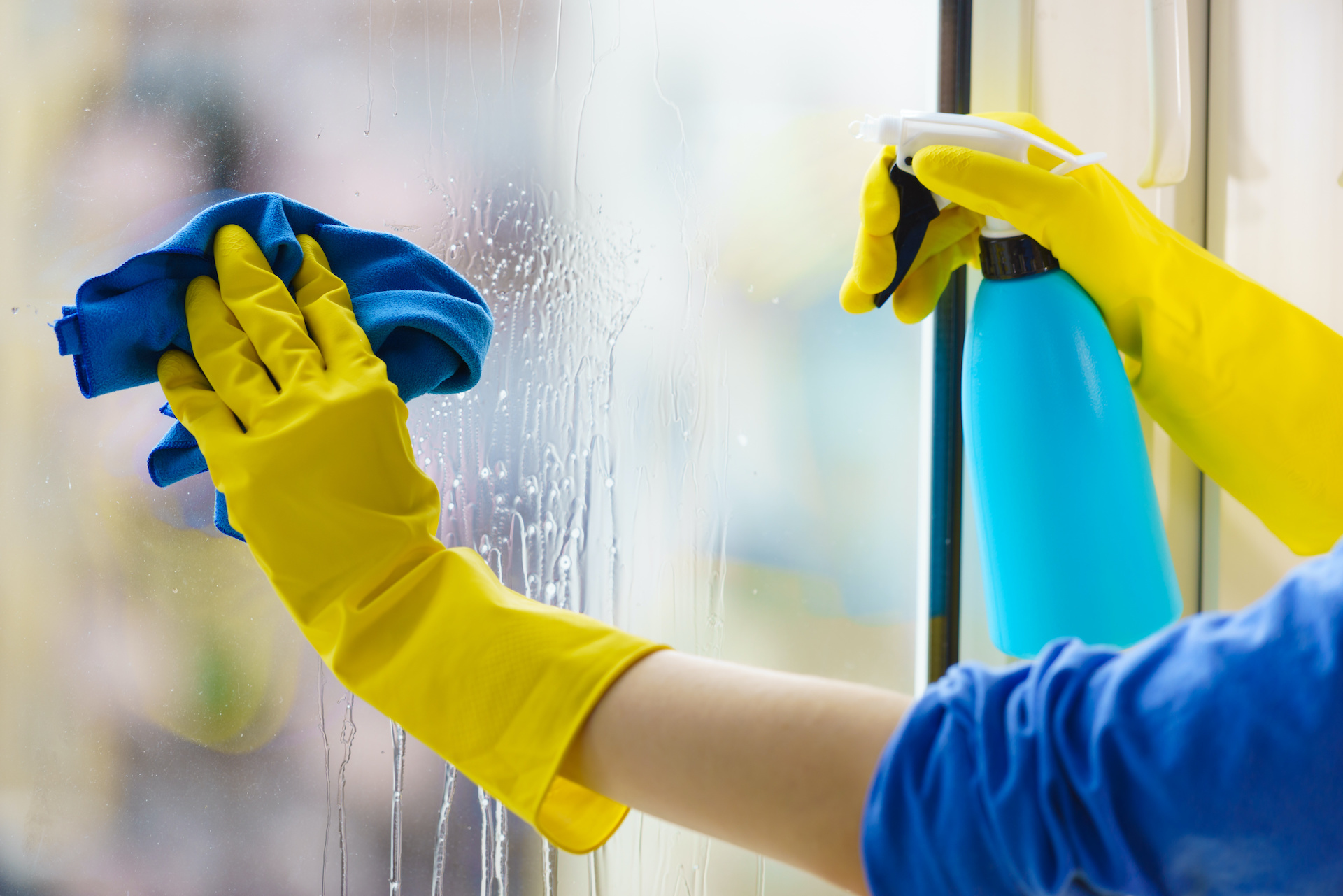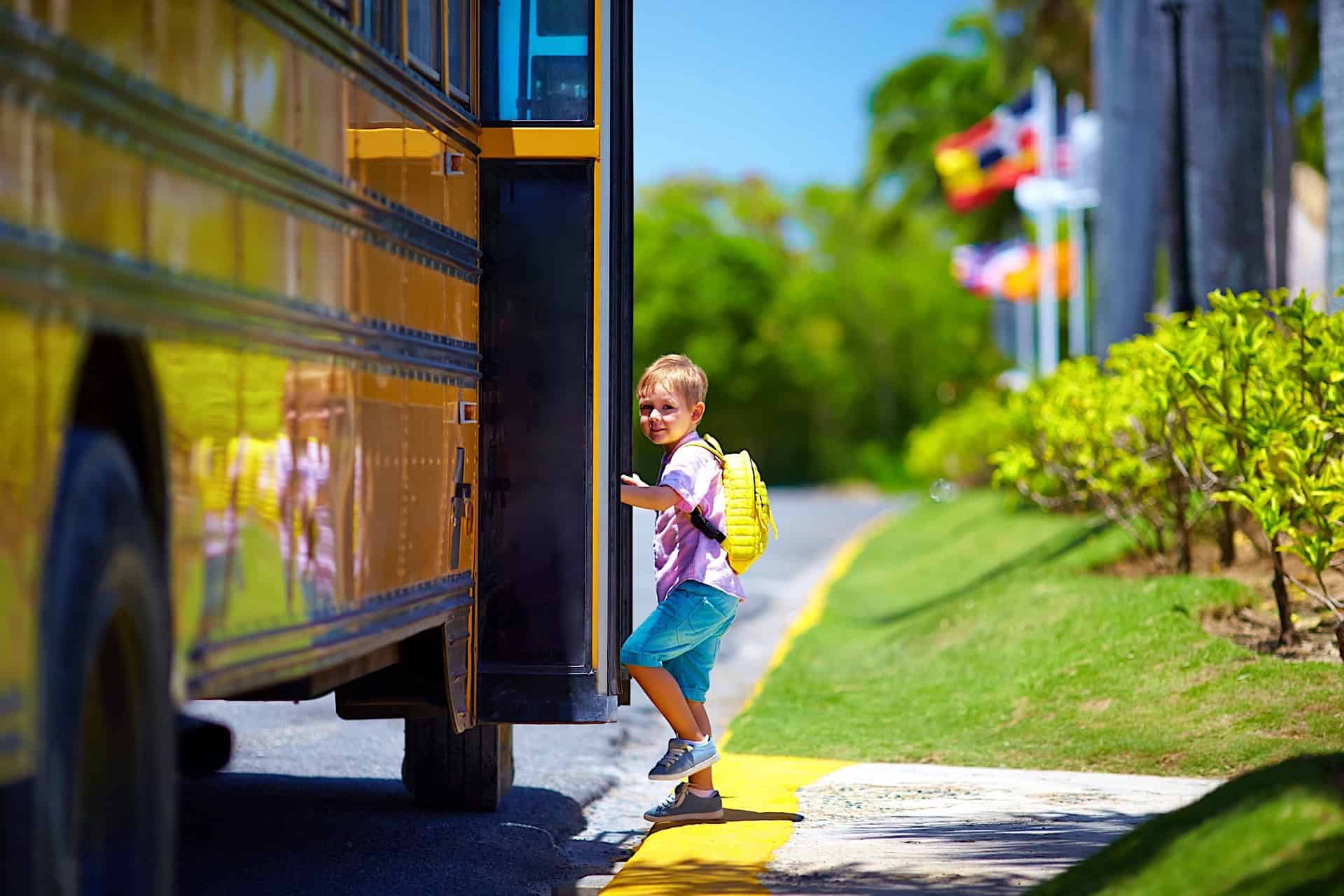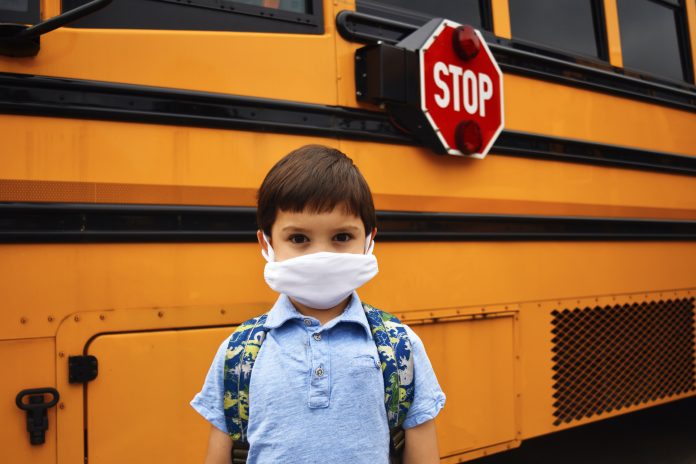One of the most popular School Transportation News webinars to date featured three school bus child passenger safety experts, who provided recommendations on balancing COVID-19 health and social distancing guidelines with the need to safely secure preschoolers and students with special needs.
Staff Procedures & Best Practices
“Yes, we’re going to have to take some additional steps to use the [child safety restraint systems] CSRS safely, but virus precautions should not warrant us discontinuing use of CSRS,” explained Denise Donaldson, a certified passenger safety technician instructor (CPST-I) and the editor and publisher of Safe Ride News.
Physical distancing and seating charts are recommended to reduce transmission risks to bus drivers and aides, Donaldson pointed out during the July 22 webinar. Masks and face shields also help staff stay safe, when they must approach to secure the student using proper buckling techniques. Proper hygiene, including frequent hand washing and the use of hand sanitizer after securing each student, prevents contamination or picking up the virus from surfaces.
If a piece of equipment has been exposed to the COVID-19 virus, Donaldson recommended placing it out of service for one week. She advised implementing a “one-child, one-CSRS” policy and having the same staff member securing students daily, so there are fewer people touching the same device.

Sue Shutrump, a CPST and the supervisor of occupational and physical therapy for Trumbull County Educational Services Center in Ohio, agreed. She also noted that isolation of duties also allows staff to physically distance from each other to reduce adult-to-adult transmission, which is more frequent than child-to-adult transmission. She added that encouraging students to handle their own CSRS is best practice since it encourages student independence.
Many school districts fear the loss of bus capacity because of physical distancing requirements. Rather than marking seats off with tape to take them out of circulation, Shutrump advised color-coding seats and using certain colors for different route tiers. This, she suggested, maintains the bus capacity and saves time in cleaning, when the bus returns to the garage after the route.
Equipment Cleaning & Cautions
Charlie Vits, also a CPST as well as the market development manager for IMMI’s SafeGuard brand of school bus seats and occupant restraint systems, acknowledged that cleaning CSRS is a previously overlooked topic that has skyrocketed to the forefront of student transporter considerations.
He relayed an incident in which the buckles of the lap belts on several buses corroded due to a cleaner that was being used to kill mold, necessitating the replacement of all the belts on the bus. Thus, he added, the choice of cleaners is important.
“What we choose to use and do is extremely critical,” he stressed. Some cleaners, while effective against the coronavirus, are harmful or toxic to humans.
For example, Vits said, seating manufacturers recommend using mild soap and lukewarm water to clean vinyl seat covers and seatbelt webbing. A mild soap with few chemical additives should be used and residue should be wiped off.
Related: COVID-19 Takes Industry to Cleaners
Related: Companies Offer Cleaning Tips, Solutions for the Future of School Busing
Related: CDC Releases Guidance on Best Practices for Reopening Schools
Cleaning a CSRS must be done according to manufacturer instructions, as the use of inappropriate cleaners can harm the safety equipment and affect its crashworthiness, Donaldson cautioned.
“Look to the CSRS manufacturer, not the maker of the cleaner,” she stressed.
Buckles and plastic components of the restraint systems must be cleaned with water only, Vits explained, since lubricating agents or soaps can harm the internal mechanisms and cause latches to release unintentionally.
“It’s so important that you follow the manufacturer’s directions; the manufacturer has done everything to filter out potential problems for you,” Vits advised.
Shutrump noted that chemicals used to clean the bus must be carefully analyzed to ensure they will not present a problem in aerosol form or as residue on equipment for students with special needs. She said that parents should be brought into the conversation to ensure their consent on their children being around the chemicals used.

Unique Student Needs
“We know that students with special needs are all unique, so the best methods to use when transporting them truly must be assessed on a case-by-case basis, and that includes how we apply precautions for COVID-19,” said Shutrump.
Parent communication, IEP meetings and a consideration of the whole experience from the bus stop to school are crucial.
Related: Rethinking School Startup for Students with Special Needs
Related: National Academies Advises School Districts to Prioritize Full-Time, In-Person Classes
Related: American Academy of Pediatrics Says Students Need In-Person Instruction
Related: Amid All of Today’s Challenges, Success Lies in Human Understanding
With students who find it hard to physically distance, environmental cues such as color-coding seats or a magnet with a student’s picture stuck on the bus above their spot can help keep them in their assigned seats. If these do not work, a CSRS may be needed.
If a district’s transportation plan calls for use of only window locations for student seating, or limiting if not eliminating front-row seating to better protect bus drivers, staff should consider whether those placements will negatively affect students with shunts, respiratory conditions, brittle bones, spinal rods, or other health issues that render them unable to tolerate a rough ride.
Other students may be unable to wear a mask or forceful talkers, or they have communication difficulties, be prone to approaching staff, or need close monitoring for health conditions. Staff PPE is key to providing proper protection for all involved.
Students who are young, have health concerns or mental health issues, or suffer from anxiety may have difficulty or be unable to wear a mask. However, this does not mean they can be refused transportation service, Shutrump said. The same goes for students without IEPs, as Section 504 plans may protect them.

Positive reinforcement, a rewards system, and experimentation with different mask or face shield styles can help such students tolerate the PPE. Safety must be kept at the forefront as some students may be prone to fidgeting with their masks or turn them into strangulation hazards.
The Student Transportation Aligned for Return To School (STARTS) Task Force recently released a toolkit that allows student transporters to build plans based on state guidelines and individual district needs. Shutrump advised using this resource to look for ideas and build plans.
Watch the replay of the webinar, on-demand. Download a PDF of the questions asked during the webinar and the answers provided by the three panelists.














